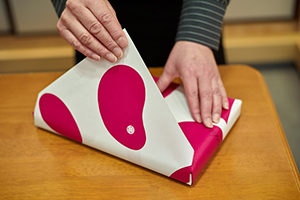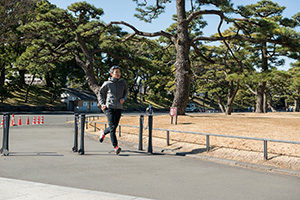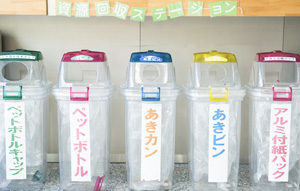Protectors of the Cherry Blossoms
Cherry Blossoms Tree more than 80 Years Old in Kunitachi
From Kunitachi Station, heading straight to the south is a street with the common name of Daigaku-dori (university street). On this street that has Hitotsubashi University on the left, and right of it, there are 170 cherry trees along both sides of the street, with Someiyoshino, Yamazakura and Oshimazakura varieties of cherry blossoms. These rows of cherry trees were planted from 1934-1935, in what was then Yaho Village (now Kunitachi City) by local resident’s and the young men’s league. After that, Sakura-dori (cherry blossom street), a street stretching perpendicular to Daigaku-dori on its south side, was built. On these two streets, there are a total of 400 cherry trees that blossom each year. Even though a tunnel of cherry blossoms still forms every spring, some trees are becoming weaker due to aging and a deteriorating environment. To protect the trees, with the help of the municipality, are the “Kunitachi Protectors of the Cherry Blossoms”.

The Protectors of the Cherry Blossoms.
Leader Kazuhiko Otani started doing this sort of work when he saw large amounts of bark on a tree being peeled off when caught on a truck. He looked around to find many trees weakening, with moss or mushrooms growing on the trunks of the trees. The soil around the cherry trees has been walked over and hardened due to flower viewing parties, or people waiting for the bus at bus stops. Feeling that leaving things as they were would be dangerous for the trees, he called out to his fellow citizens, and they improved the conditions of the trees by planting flowers around them, and tending to their damaged trunks. Then in 2000, with the cooperation of Kunitachi City, a special group was created to deal with protecting these trees: the Kunitachi Protectors of the Cherry Blossoms. “Daigaku-dori is used by many people every day commuting to work or school, most of them do not look up to see the cherry blossoms or ginkgo tree.
We first want the children to have an interest in the trees, and so we are going to schools and giving classes,” said Mr. Otani. They also had children draw pictures of cherry blossoms, and use these pictures decorate the sidewalks in March, right before the blossoms are set to bloom. “Cherry tree roots are quite shallow in the ground, therefore if we put these pictures around the trees, they can also help protect them.

Becoming a City with Pride through the Cherry Blossoms
Around the cherry trees, there are saplings growing in pots. “We are growing two types of cherry trees from seed: Yamazakura and Oshimazakura. If we further nurture them, we will be able to plant them in the ground. We are not just protecting the current cherry trees, we also want to replace older trees with newer ones. Using cherry blossoms as a starting point, we want everyone to think about environmental issues.” This year has also seen the trees over 80 years old have cherry blossoms in bloom. “If you look closely, you can see small cracks in the bark, showing the trees’ continuing growth. Improving the soil, and the immediate environment around the tree, we want the trees to be healthy past 100 years.” Mr Otani wants people in Kunitachi to feel a sense of pride of its city through the cherry blossoms. This year the cherry blossoms also reached full bloom. The view was TOKYO GOOD.

| When did this start? | Before the Edo Period, there were people called “Komori (Protectors of Trees)”. There was a novel in 1964 called “Sakuramori (Protectors of the Cherry Blossoms)” (Tsutomu Minakami), and that’s where the phrase came from. |
| Where can we see this? | To see cherry trees along the streets in Kunitachi, get off the train at Kunitachi Station, and head out the south exit. For 1.3 kilometers the road will look as if it is died in pink. |
| When is the recommended time and place? | From the end of March to the beginning of April. |
| Data related to this topic: | Flowering dates for the last six years: March 28, 2011, March 31, 2012, March 16, 2013, March 25, 2014, March 21, 2015, March 26, 2016 (Reference: Japan Meteological Agency website) |
| Please Note: | To protect the roots of the trees, look at the cherry blossoms from far to get the full beauty. Having a party under the cherry blossoms, or leaving garbage in the area is a violation of good manners. |
In cooperation with: Kunitachi Protectors of the Cherry Blossoms











